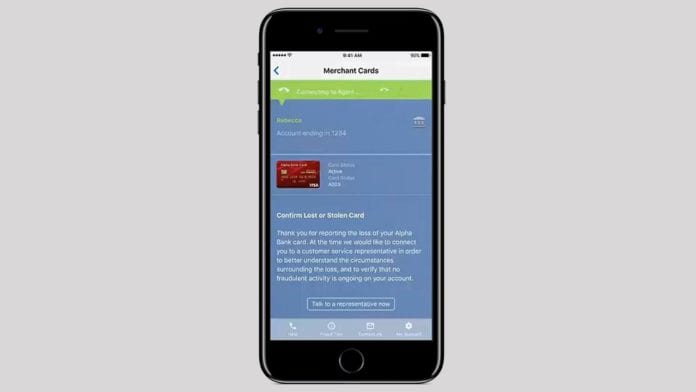New Verizon Enterprise offering is aimed at better mobile device integration, multimedia customer care
Verizon Enterprise has launched a new offering that integrates a mobile device-based multimedia experience into customer care interactions, so that customers and agents can not only speak but relay information that utilizes the smartphone’s screen.
Tom Smith, senior manager of customer experience innovation with Verizon Enterprise Solutions, said that several common themes emerged as the company talked to enterprise customers about the concept for Visual Interactive Calling: many enterprises were pushing mobile-first services because their own customers were coming to them via mobile devices; customers often wanted to start out in a self-service environment on the mobile and then easily escalate to agent assistance with all the information about their issue intact; and businesses were looking to leverage some of the security and information inherent in the mobile device environment in order to prevent fraud.
Verizon Enterprise, he said, wanted to “really get out in front of some of the changes that are taking place in the way that consumers communication, and the fact that they’re expecting enterprise to adapt to their communication modes instead of the other way around.”
Smith went on to say that, “I am very heartened to be able to say that there appears to be much more focus from the enterprise on delivering a great user experience first — and then, obviously if you can reduce costs, that is not going away. There’s still emphasis there. But the primary emphasis seems to be now on delivering better user experience.”
In a demo for RCR Wireless News, Smith described how a bank customer could use her mobile app to report a lost or stolen card and request a new one — at which point the financial institution can

require the customer to interact with an agent. The customer can hit a button in the app to contact an agent, the call connects from the application and the agent is provided with the context of the customer’s issue. As the transaction proceeds through basic steps such as having the customer review recent transactions, those appear as a list on the mobile device for the customer to read through and interact with to identify suspicious charges, instead of an agent having to read everything aloud — a much more efficient and less confusing process, Smith said. The customer service agent also receives information about the customer’s location to help verify that the request is legitimate or provide additional context.
Smith also noted that the customer is provided with confirmations of actions along the way that appear on the screen of her mobile device. The reason for the real-time confirmations, Smith said, is that “the number one reason for calls coming into the contact center is simple confirmation of transactions that have already taken place.”
Smith said that Verizon Enterprise supplies a software development kit for Visual Interactive Calling so that app development teams can incorporate it into their mobile app — and that an early customer has been able to get the functionality up and running in its application after a series of three, two-week development cycles.
The solution is aimed at verticals including airlines, hospitality, retail, healthcare, automobile rental and financial services, Smith said, with an initial focus on financial service and airlines. Those verticals in particular already have mobile apps with a high degree of penetration among their customer cases, Smith said, and they deal with complex interactions that often require a customer service agent to be involved.

